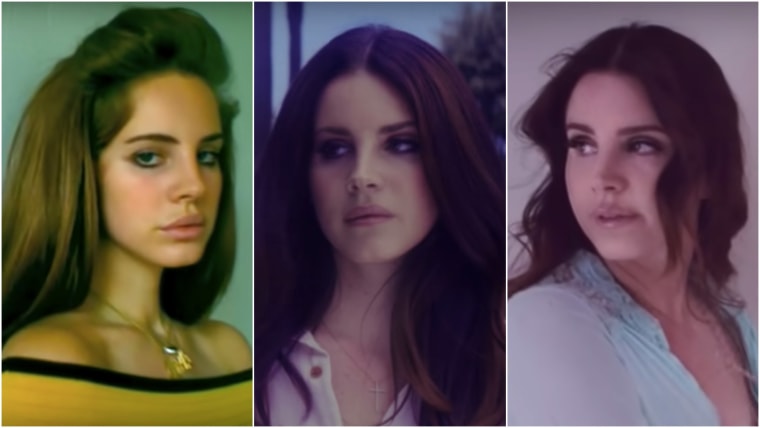
For someone with such a focus on her sense of identity, it’s surprising how much Lana Del Rey’s sound has changed. Since she first emerged with her instant-classic 2011 single “Video Games,” Del Rey’s touched upon styles ranging from trip-hop, dirgey, obscured torch songs, and filmic balladry. She’s one of the only artists who could create a sonically cohesive album that features both Playboi Carti and Stevie Nicks; since “Video Games,” her music has become progressively more idiosyncratic and out-of-step with pop, making for a fascinating and unprecedented career trajectory.
It’s hard to be a casual listener of Del Rey’s music, which rewards intensive listening and obsessive analysis. While her catalogue is potentially dense and prohibitively introspective, its hooks inevitably always reveal themselves, and her lyrics tell stories that only fully resonate over time. Those who criticised her writing in the early stages of her career didn’t anticipate how the characters and motifs in her work would unfurl into narratives about romance, capitalism, and America that continue to span across albums to this day. For those who haven’t paid close attention to Del Rey’s journey over the past decade, we’ve put together a guide to the evolution of her sound, from her early days as Lizzy Grant to this week’s Norman Fucking Rockwell.
Lizzy Grant / May Jailer / Sparkle Jump Rope Queen / Lana Del Ray / Early Lana Del Rey
Early on in her career, Del Rey attempted to make music under a variety of names, including May Jailer, Sparkle Jump Rope Queen, Lana Del Ray, and her given name Lizzy Grant. There are hundreds of old demos recorded by Del Rey floating around on file-sharing sites and YouTube. Amongst Lana Del Rey fans, these songs are often widely known and oft-referenced, with entire Tumblr-era blogs dedicated to leaking pre-”Video Games” tracks. The highest-quality versions of these songs available are still demo-quality — miles away from anything Del Rey would release when she signed with Interscope, which is a shame. Many of them are beautifully written and feature Del Rey singing in a much higher register than she ever has during her major-label career.
But they also utilise Del Rey’s cheapest, thinnest metaphors and motifs, even though there are a few gems, such as the Scarface- and CBGBs-referencing ballad “Never Let Me Go” and the sweet pop hook of “TV In Black & White.” These songs also often feature Del Rey singing over production she’s never touched again, such as the vaguely electroclash-leaning “Go Go Dancer.” A handful of demos from this era would find their way onto Born To Die, albeit in very different forms. Prior to 2012, “National Anthem” was a distorted, audacious pop track that’s miles away from its neutered, slowed-down form on Born To Die; conversely, “Diet Mountain Dew” used to have slow, lounge-y production that was sped up on Del Rey’s debut.
Born To Die / Paradise
Born To Die was preceded by the release of “Video Games” and “Blue Jeans,” and, in hindsight, the success of those two songs impacted how Interscope and Del Rey handled the album’s release. The record’s strangest trait is its sonic uniformity, as if the album’s production was created by-algorithm; it’s all woozy trip-hop drums, MIDI strings, and undefinable vocal samples.
This issue was well and truly fixed on Paradise, Born To Die’s companion EP. The eight-track release’s sweeping ballads and dark, lush production feels like a truer representation of what Del Rey’s catalogue would eventually become. Songs like “Ride” and “Yayo” hang in the air after they finish, capturing the same haunted quality that initially drew people to “Video Games.” Built around a cover of “Blue Velvet” — that she initially recorded for an H&M ad, no less — Paradise sometimes feels like her true debut.
Ultraviolence
Del Rey’s sophomore record Ultraviolence is the first of many sharp left turns she’s made in her career. Running an hour long and featuring no discernable singles, Ultraviolence feels like a pointed response to the immense backlash Del Rey received after Born To Die. Produced by The Black Keys’ Dan Auerbach, Ultraviolence is overwhelming and heavy, drained of most of the light and levity that was previously present. It’s a slow, richly produced record that begins with a seven-minute wail and ends with a Nina Simone cover; at many points, Del Rey’s voice is drowned out by Auerbach’s hazy, caterwauling guitar. It feels like the high point of Del Rey’s career so far, an album defined by a dark and singular vision as well as a complete willingness to alienate fans of her previous work.
In 2014, releasing Ultraviolence was one of the greatest sins Del Rey could have committed. It’s the polar opposite of Beyonce’s self-titled manifesto of feminist liberation released mere months prior; Del Rey writes about women largely subject to the whims of violent and nasty men, going as far as to interpolate The Crystals’ “He Hit Me (And It Felt Like a Kiss)” on the title track. People didn't like that. A friend told me at the time that she wouldn’t listen to this record because she objected so strongly to that sentiment, which says a lot about that period of personal politics, considering how much Ultraviolence has to say about power and gender. “Money Power Glory” and “Fucked My Way Up To The Top” directly address the sexism Del Rey copped after the release of Born To Die, while “Ultraviolence” and “Cruel World” paint disturbing and unpleasant portraits of abusive, codependent relationships. As with a lot of Del Rey’s music, Ultraviolence is a lot more complex than people first gave it credit for.
Honeymoon
“High By The Beach” — the first single from Del Rey’s third record Honeymoon — was, for many people, an entry point into the singer’s world. Released towards the tail end of summer 2015, “High By The Beach” is a vicious kissoff that incorporates a trap beat into Del Rey’s gauzy balladry. It’s immediate and fun, and it was also a complete feint in the lead-up to Honeymoon, which is somehow even less accessible than even the ultra-dense Ultraviolence. Many songs hit the five-minute mark, and drums are a rare presence.
But Honeymoon is nowhere near as bleak as Ultraviolence. On her third record, Del Rey writes about characters who are less in the thrall of terrible men and more in the business of using and manipulating them. It feels more like Del Rey naturally moving on to focusing on people for whom freedom equals loneliness. On the album’s title track, she sings to a man so elusive and so ill-defined that he barely exists; on the David Bowie-interpolating “Terrence Loves You,” she mourns a lover who died, rather than one who loved and left her. The album features many complex, abstract visions of loneliness, and even though Del Rey abandoned the topic afterwards, Honeymoon still stands as a nuanced and resonant record on its own.
Lust For Life
Lust For Life brings the first portion of Del Rey’s career full circle. It‘s a demarcated ending of an album that fine-tunes half-baked ideas from earlier records and introduces new themes that would be expanded upon later. Opening with the serene, warm “Love,” Lust For Life presents a wiser and calmer Del Rey, and given the way the record is sequenced, you could think of it as a concept album: in its early third, Del Rey deals with anxieties around her own fame (“13 Beaches”) and romantic life (“White Mustang”) before finding herself paralysed by fear of the changing political landscape (“Coachella,” “When The World Was At War”). During the final stretch — which contains some of the most interesting songs of Del Rey’s career — she finds peace, and makes a commitment to resistance against a rising right-wing tide.
Lust For Life is seemingly less defined by fictional narratives and more by tales of her own life. “13 Beaches” is about a run from paparazzi in Italy, while “Coachella” was inspired by a daydream during Father John Misty’s Coachella set; “Change” speaks to Del Rey’s urge to be more openly, actively political. By the time “Get Free,” the record’s closer, comes around, Del Rey is looking upward into a new era. “This is my commitment, my modern manifesto,” she sings. “I’m doing it for all of us who never got the chance.”
Norman Fucking Rockwell!
That ending of Lust For Life leads neatly into a period of increasing politicisisation in Del Rey’s music. This week, the singer’s long-running fables are extended with Norman Fucking Rockwell, a record that continues her tilt into political music. Where Del Rey once used America as a kind of fantastical symbol for capitalism and power, NFR’s early singles — among them “Venice Bitch,” “Hope Is A Dangerous Thing For A Woman Like Me To Have – But I Have It,” and “The Greatest” — find the musician reckoning with the realities of modern-day America. “The culture was lit, and I had a ball,” she sings on “The Greatest,” seemingly saying goodbye to the world amidst global turmoil.
Elsewhere, Del Rey deepens her study of human relationships. On NFR’s title track, she describes a partner’s failings with surprising depth and much more empathy than one would usually expect from any pop star’s breakup track. Aside from “Cinnamon Girl” — a Born To Die style trip-hop track — NFR is quieter and more finely-wrought than any previous Del Rey album. The album, produced by Jack Antonoff, takes inspiration from easy-listening radio and adult-oriented rock, a new area of influence for Del Rey. But considering how easily she’s shape-shifted between albums before, that’s no surprise.


